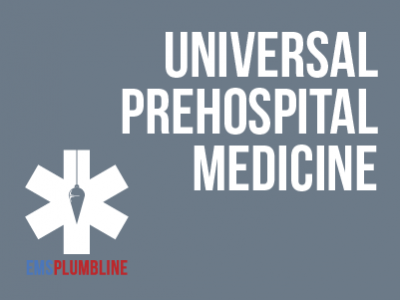 |
Communications for the Fire and EMS Supervisor |
1.00 |
So much of what we do in Fire and EMS is problem-solving. This CME is a fantastic means for managers to learn about the very technical field of Radio Communications. If you are a manager that is in the position of problem-solving, you will want to take time to review this material. Three experienced professionals succinctly discuss what you will need to know when preparing for a problem or reacting to problems in the Radio Communications realm. Final Exam: This multiple-choice exam is designed to test your knowledge of the material you just reviewed. You have two attempts to gain an 70% or higher on this exam. Please take your time and answer each question carefully. |
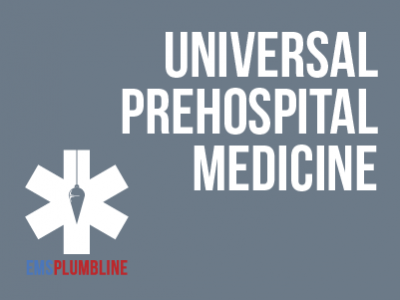 |
Communications for EMS Providers |
1.00 |
Many providers view EMS Communications as the most basic of topics. At the same time, some experienced providers see this as one of the most in-depth issues that they may come across. How do you view the topic of EMS Communications? It is difficult to find a provider with a rich background in EMS Communications that John Merklinger brings to the table. His knowledge of the industry and his ability to breakdown complex issues makes this large topic very easy to digest.
Final Exam: This multiple-choice exam is designed to test your knowledge of the material you just reviewed. You have two attempts to gain an 70% or higher on this exam. Please take your time and answer each question carefully. |
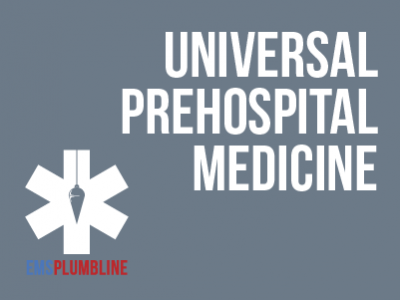 |
Communicating with the Deaf Sign Language User |
1.00 |
This training was developed by Dr. Jason Rotoli, Deaf Health Pathways Director, University of Rochester School of Medicine and Dentistry in conjunction with Dr. Jeremy Cushman, Chief of the University of Rochester’s Division of Prehospital Medicine. Funding for the Care of the Culturally Deaf education was provided by Society of Academic Emergency Medicine. Continuing Education provided by EMSPlumbline
Final Exam: This multiple-choice exam is designed to test your knowledge of the material you just reviewed. You have three attempts to gain an 80% or higher on this exam. Please take your time and answer each question carefully. |
 |
Commotio Cordis |
1.00 |
Paramedic Instructor Peter Bonadonna discusses his thoughts on Commotio Cordis in an effort to orient EMTs that are not familiar with the phenomena. |
 |
Collaborative Protocol Update - Patella Dislocation |
0.40 |
This course is designed to be taken by all BLS and ALS providers in the MLREMS region as an addition module for the collaborative protocol update.
A score of 70% is required to pass the exam which follows. |
 |
Climate vs. the Respiratory System |
1.00 |
This lesson briefly explores chronic respiratory illness. The benefit is we bring Meteorologist Bob Metcalfe to our discussion. You will quickly see that there are a number of things going on everyday that effect your respiratory patients that we should be aware of. Final Exam:Please read the questions carefully. You will have two attempts to obtain a 70% or higher. If you are not successful on your second attempt you are welcome to take the course again. Good luck! |
 |
Children with Special Health Care Needs: Assessments Part II |
1.00 |
In this second lesson of the series, another family offers their time and personal experiences. Take advantage of the information that the medical professionals and the mother of a medically fragile child offer. We believe that your assessment and treatment abilities will improve. Final Exam: This multiple choice exam is designed to test your knowledge of the material you just reviewed. You have two attempts to gain an 70% or higher on this exam. Please take your time and answer each question carefully. |
 |
Children with Special Health Care Needs: Assessments Part I |
1.00 |
This is the first lesson in a series that offers two opportunities. You have the opportunity to learn from a medical professional and the opportunity to learn from an experienced and caring mother. Listen carefully in this first lesson and consider what should be done for all medically fragile children. Final Exam: This multiple-choice exam is designed to test your knowledge of the material you just reviewed. You have two attempts to gain an 70% or higher on this exam. Please take your time and answer each question carefully. |
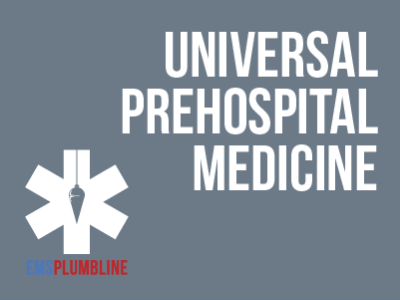 |
Brick by Brick: Trauma Transport Decisions 4—Pediatrics |
0.50 |
|
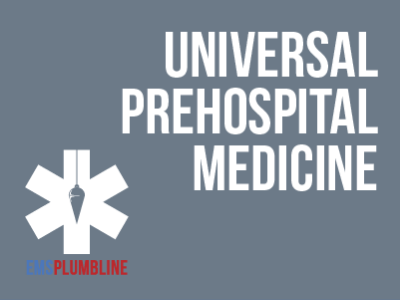 |
Brick by Brick: Trauma Transport Decisions 3—Response to the Big One |
1.00 |
|
 |
Brick by Brick: Trauma Transport Decisions 2—HEMS |
0.50 |
|
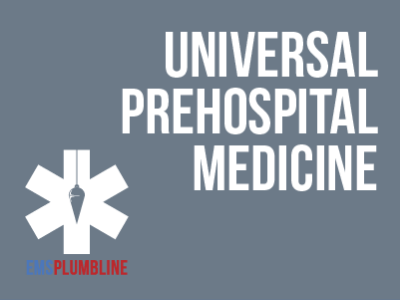 |
Brick by Brick: Trauma Transport Decisions 1—Receiving Facilities |
1.00 |
|
 |
Brick by Brick: Neonatal Resuscitation for EMS Providers |
1.50 |
In this lesson, you will be able to compare the difference between the unplanned delivery of a thriving full-term baby to that of a preterm baby who is not breathing. There are very few calls for service in which responders may alter as many years of health and well-being as may be done with Neonatal Resuscitation. After completing this training, we believe you will be better prepared to care for both the mother and the newborn. |
 |
Brick by Brick: Gastroenterology Overview—Part 2 |
1.50 |
Melodie Kolmetz, Paramedic, PA-C, is a multi-disciplinary provider and educator. Her lesson continues with an overview on completing a physical exam. Melodie's experience as a paramedic, physician assistant, and instructor offers an opportunity to learn from one of the best in the industry.
Final Exam: Please read each question carefully. You will have two attempts to gain a 70% or higher on this exam. If you are not successful in two attempts, you are welcome to take the course again to gain the certification. |
 |
Brick by Brick: Gastroenterology Overview—Part 1 |
1.50 |
In most EMS systems, gastroenterology education is avoided at the BLS level. However, prehospital providers frequently respond to reports of nausea, abdominal discomfort, or pain. There is often a disparity in the relationship between the frequency of responses and the amount of education available to EMS providers.
Melodie Kolmetz, Paramedic, PA-C, is a multi-disciplinary provider and educator. She brings her experience as a paramedic, physician assistant, and university professor to this prerequisite course. Her review of the anatomy and physiology of the gastrointestinal and genitourinary tracts offers a better understanding of how to identify life-threatening emergencies. The end result will be better choices when determining the appropriate prehospital interventions and the nearest appropriate transport destination.
Final Exam: Please read each question carefully. You will have two attempts to gain a 70% or higher on this exam. If you are not successful in two attempts, you are welcome to take the course again to gain the certification. |
 |
Brick by Brick: Edibles and Legalization-Part 1 |
1.00 |
In the Fall of 2021, EMT Conner Griffin sat down with Monroe Livingston County's Medical Director, Jeremy Cushman, and Dr. Nicholas Nacca. Dr. Nacca brings a unique set of skills to the first lesson in this series. His experience as an Emergency Medicine Physician and a Toxicologist is evident. They discuss the medical aspects of potent edibles and how legalization offers new challenges to prehospital medicine. You will want to listen to this lesson and return for more as this topic evolves.
Final Exam: This multiple choice exam is designed to test your knowledge of the material you just reviewed. You have two attempts to gain a 70% or higher on this exam. Please take your time and answer each question carefully. |
 |
Brick by Brick: Difficult Deliveries |
1.00 |
Assisting a mother with a complicated childbirth is one of the most challenging situations an EMS provider may encounter in their career. Our team of experts discuss the prehospital management of postpartum hemorrhage, prolapsed cord, shoulder dystocia, and breech birth. Doctors Kristen E. Burhans, Maia Dorsett, and Kara Louise LaBarge demonstrate skills that you will want to practice with your response team before your next obstetrical emergency occurs. |
 |
Bloodborne Pathogens and HIV (Human) |
1.00 |
In this course, you will learn about the characteristics of bloodborne pathogens, diseases caused by these pathogens, such as HIV, and how they are transmitted. You will also learn the elements of an exposure control plan and how to prevent contact with or infection from contaminated body fluids. In addition, you will learn how to handle exposure incidents involving blood, and the signs, labels, and color-coding used to warn of biohazards and bloodborne pathogens. This training is provided to help employers provide a safe and healthful work environment for their employees and minimize the possibility of employee exposure to bloodborne pathogens.
This course is labeled with (Human) to indicate that it is not animal-related.
|
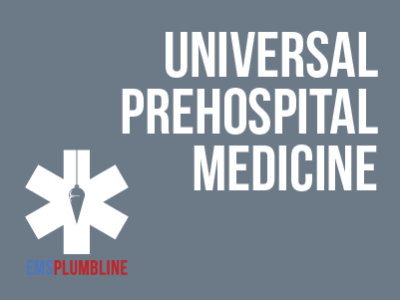 |
Bedrock: Therapeutic Communications for EMS |
1.00 |
The topic of therapeutic communications relates to nearly every EMS response and is especially important for high-acuity situations. Elizabeth C. Shannon, EMT, MS, RN, PMHNP-BC, brings her years of experience as a mental health care provider and an EMT to the table in this insightful discussion. As you hear her navigate the questions posed, we hope that you will confirm what you are already doing well. We also hope that your reflection on the subject will lead to improved EMS responses for you and the other medics on your crew.
Final Exam: Please read each question carefully. You will have two attempts to gain a 75% or higher on this exam. If you are not successful in two attempts, you are welcome to take the course again to gain the certification. |




















